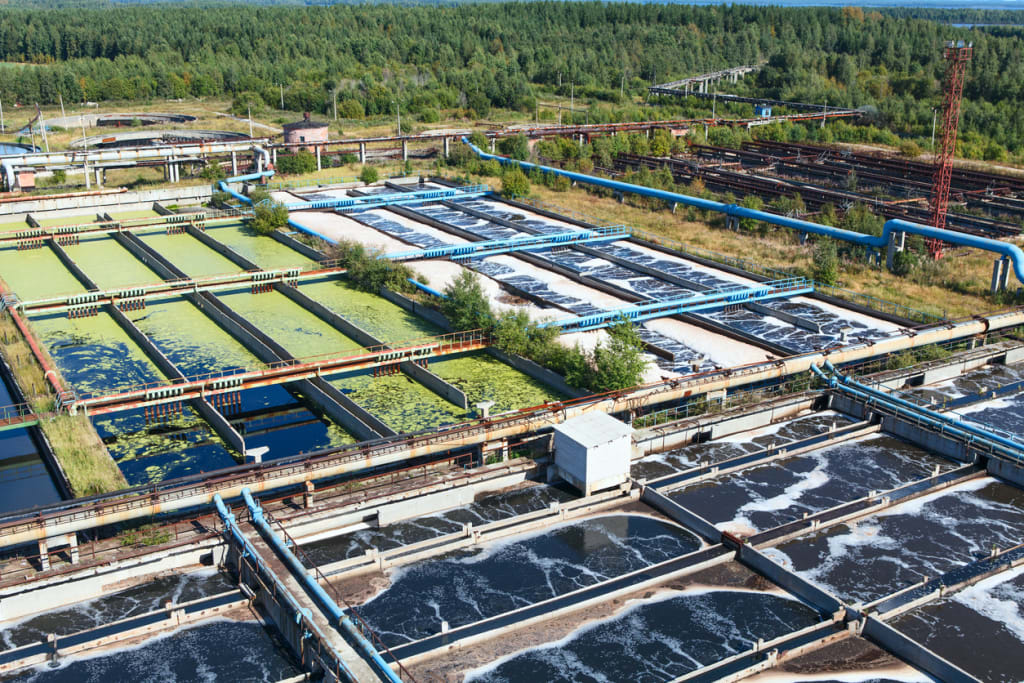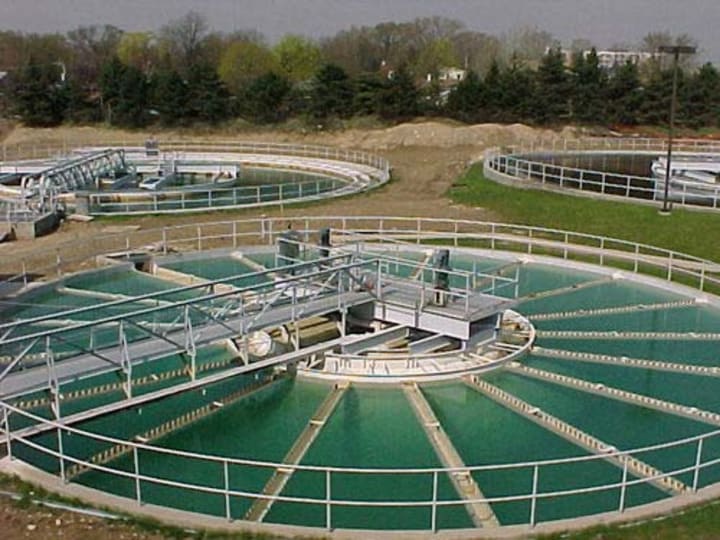Wastewater Treatment: The 8 Stages of the Wastewater Treatment Process
Discussing wastewater treatment and the 8 stages of the wastewater treatment process

Treating wastewater is a process that must be done carefully to ensure the environment remains healthy. Wastewater, which is water that has been used in homes and businesses, contains many different types of pollution or contaminants that can harm local ecosystems if they are not removed before the water enters rivers, streams, lakes, and oceans.
Wastewater treatment plants are a necessary evil. Without them, the world would be a very dirty place. These plants not only reduce the amount of pollution in our environment, but they also protect public health and improve water quality.
In this article, we will discuss wastewater treatment and the 8 stages of the wastewater treatment process.
What is Wastewater Treatment?

Wastewater treatment is the process of removing the chemicals that are used in homes, schools, and businesses. Pesticides and other chemicals, as well as lawn chemicals, will all enter the water. The wastewater treatment facility removes these hazardous materials from the water before releasing them back into the environment.
Why Do We Treat Wastewater?
We treat wastewater because of the chemicals that come from our everyday lives. These are chemicals such as pesticides and household cleaners, which can be harmful to us or wildlife if released into rivers, streams, ponds, lakes, and seas.
Wastewater is a valuable source of energy. You may return treated wastewater back to where it came from, and you don't have to worry about pollutants affecting our rivers and streams any longer.
How can Wastewater be Treated?
Wastewater can be treated in several ways. One is using sulfuric acid, which can be made with persulfate, which you can acquire from a persulfate supplier in your area or online. This is a solid that is dissolved in water to make the acid. The wastewater then flows through a series of tanks where it meets with the persulfate.
Chlorine dioxide, which is a chlorine-based disinfection alternative, may also be used to purify wastewater. When chlorine reacts with sodium chlorite, this gas is produced. Chlorine dioxide is an effective method of killing bacteria and other germs. It also leaves no harmful byproducts behind!
How does the Waste Water Treatment Work?
The goal of wastewater treatment is to remove pollutants from the water and then discharge it into the environment safely. Wastewater treatment plants use a set of procedures to achieve this goal.
The 8 Stages of the Wastewater Treatment Process
Stage One: Removal of large items from the influent to prevent damage to the facility's pumps, valves, and other equipment.
The process of treating and reclaiming water from wastewater (any water that has been used in homes, such as flushing toilets, washing dishes, or bathing, and some water from industrial use and storm sewers) starts with the expectation that after it is treated, it will be clean enough to reenter the environment.
The first step in wastewater treatment is to remove large objects that have entered the sewage system and would otherwise damage pumps and obstruct water flow if not removed. A bar screen is commonly used to sweep away huge things from the input, after which they are sent to a landfill.
Stage Two: Removal of grit by flowing the influent over/through a grit chamber.
Fine grit that finds its way into the influent should be removed to prevent pumps and equipment downstream from being damaged (or impacting water flow). This size is too small to be filtered out, and it must therefore be eliminated from the grit chamber. There are several types of grit chambers (horizontal, aerated, or vortex) that regulate the movement of water, allowing heavier grit to fall to the bottom of the chamber; the water and organic material continue to flow forward in the process. Grit is actually taken out of the bottom of the chamber and discarded.
Stage Three: Initial separation of solid organic matter from wastewater.
Solids are known as organics/sludge sink to the bottom of the tank and are pumped to a sludge digestor or sludge processing area, dried, and hauled away. A good settling rate is one of the best indicators of how well the clarifier is working. The flow rate into the clarifier may be adjusted to help operators tune settling rates and efficiency.
The effectiveness of the primary clarification is largely determined by water flow. If the flow rate is too rapid, the solids don't have adequate time to settle to the bottom, resulting in a detrimental effect on water quality downstream. It has an impact on how things work upstream if the water flow is insufficient.
The settlement that occurs in the clarifier is known as sludge, which is pumped out on a regular basis to prevent it from affecting the separation process. The sludge is then thrown away after all of the water has been removed and is commonly used as fertilizer.
Stage Four: Air is pumped into the aeration tank/basin to encourage conversion of NH3 to NO3 and provide oxygen for bacteria to continue to propagate and grow.
Once converted to NO3, the bacteria remove/strip oxygen molecules from the nitrate molecules, and the nitrogen (N) is given off as N2↑ (nitrogen gas).
The sewage treatment process, in its most basic form, involves promoting and accelerating the natural processes of bacteria that break down organic material at the center. This begins in the aeration tank. The major purpose of the aeration tank is to pump oxygen into the tank to stimulate the breakdown of any organic material (and thus bacterial growth) as well as ensure there is adequate time for it to occur.
Aeration may be performed by pumping and releasing air into the tank or by vigorous agitation that adds air to the water. This method is maintained in order to provide optimal bacterial development conditions. Oxygen gas [O2] levels below 2 ppm will destroy bacteria, lowering the plant's efficacy. Dissolved oxygen monitoring at this stage of the plant is essential. The bacteria's ability to convert NH3 to N2↑ is measured using ammonia and nitrate measurements.
Stage Five: Treated wastewater is pumped into a secondary clarifier to allow any remaining organic sediment to settle out of treated water flow.
When the influent leaves the aeration process, it enters a secondary clarifier, much like the primary clarifier, where any tiny solids (or fines) that sink to the bottom of the tank are removed. These tiny solids, known as activated sludge, are primarily made up of active bacteria. The bacterial concentration is enhanced by part of this activated sludge, which helps in multiplication and speedier organic material decomposition. The surplus is thrown away.
The water that flows from the secondary clarifier has substantially reduced organic material and should be approaching expected effluent specifications.
Stage Six: Chlorine is added to kill any remaining bacteria in the contact chamber.
When the bacteria concentration in the aeration stage is higher, it's necessary to test the outgoing effluent for bacteria presence or absence and to disinfect the water. This ensures that more than the required amounts of germs aren't released into the environment. Chlorination is a common and inexpensive type of disinfection, but ozone and UV disinfection are becoming increasingly popular. It's critical to check for free chlorine levels before discharging chorine into the environment if it's used because free chlorine levels must be within acceptable levels.
Stage Seven: Testing for proper pH level, ammonia, nitrates, phosphates, dissolved oxygen, and residual chlorine levels to conform to the plant's NPDES permit are critical to the plant's performance.
A final test is performed after wastewater treatment to ensure that the effluent leaving the plant meets permit standards. Plants that do not meet permitted discharge levels are subjected to fines and possible jail time for the operator in charge.
Stage Eight: After meeting all permit specifications, clean water is reintroduced into the environment.
Final testing is done to ensure that the effluent leaving the plant meets permit requirements throughout the wastewater treatment process, which includes clarification, aeration, and continuous testing to guarantee optimal water flow.
About the Creator
Jen Hensey
Call me Jen, a writer and blogger of LifeStyleConvo & UrbanHouses, who worked as a full-time content creator. A writer by day and reader by night.
Enjoyed the story? Support the Creator.
Subscribe for free to receive all their stories in your feed. You could also pledge your support or give them a one-off tip, letting them know you appreciate their work.






Comments
There are no comments for this story
Be the first to respond and start the conversation.